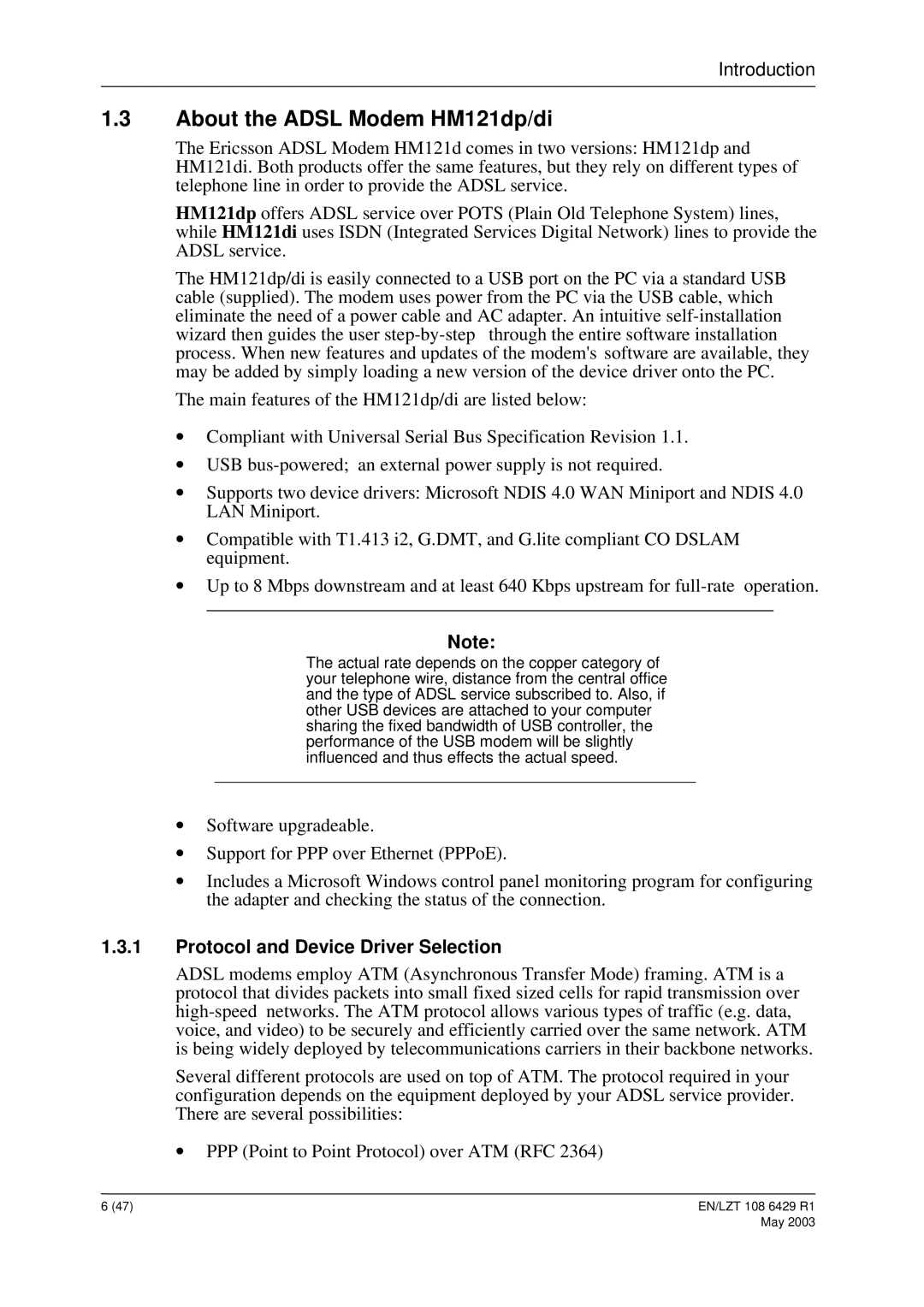
Introduction
1.3About the ADSL Modem HM121dp/di
The Ericsson ADSL Modem HM121d comes in two versions: HM121dp and HM121di. Both products offer the same features, but they rely on different types of telephone line in order to provide the ADSL service.
HM121dp offers ADSL service over POTS (Plain Old Telephone System) lines, while HM121di uses ISDN (Integrated Services Digital Network) lines to provide the ADSL service.
The HM121dp/di is easily connected to a USB port on the PC via a standard USB cable (supplied). The modem uses power from the PC via the USB cable, which eliminate the need of a power cable and AC adapter. An intuitive
The main features of the HM121dp/di are listed below:
∙Compliant with Universal Serial Bus Specification Revision 1.1.
∙USB
∙Supports two device drivers: Microsoft NDIS 4.0 WAN Miniport and NDIS 4.0 LAN Miniport.
∙Compatible with T1.413 i2, G.DMT, and G.lite compliant CO DSLAM equipment.
∙Up to 8 Mbps downstream and at least 640 Kbps upstream for
Note:
The actual rate depends on the copper category of your telephone wire, distance from the central office and the type of ADSL service subscribed to. Also, if other USB devices are attached to your computer sharing the fixed bandwidth of USB controller, the performance of the USB modem will be slightly influenced and thus effects the actual speed.
∙Software upgradeable.
∙Support for PPP over Ethernet (PPPoE).
∙Includes a Microsoft Windows control panel monitoring program for configuring the adapter and checking the status of the connection.
1.3.1Protocol and Device Driver Selection
ADSL modems employ ATM (Asynchronous Transfer Mode) framing. ATM is a protocol that divides packets into small fixed sized cells for rapid transmission over
Several different protocols are used on top of ATM. The protocol required in your configuration depends on the equipment deployed by your ADSL service provider. There are several possibilities:
∙PPP (Point to Point Protocol) over ATM (RFC 2364)
6 (47) | EN/LZT 108 6429 R1 |
May 2003
